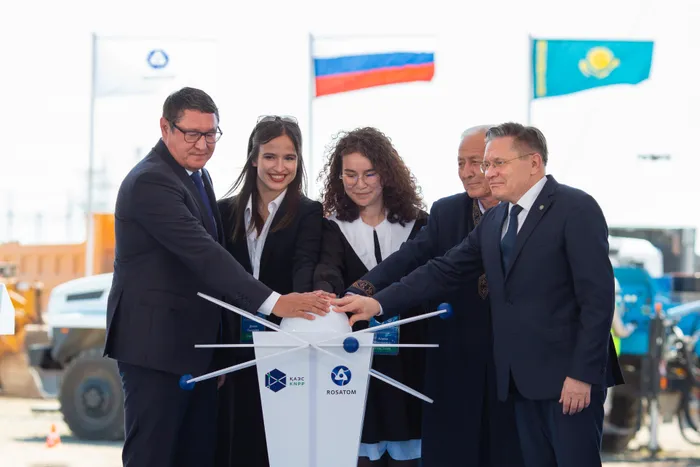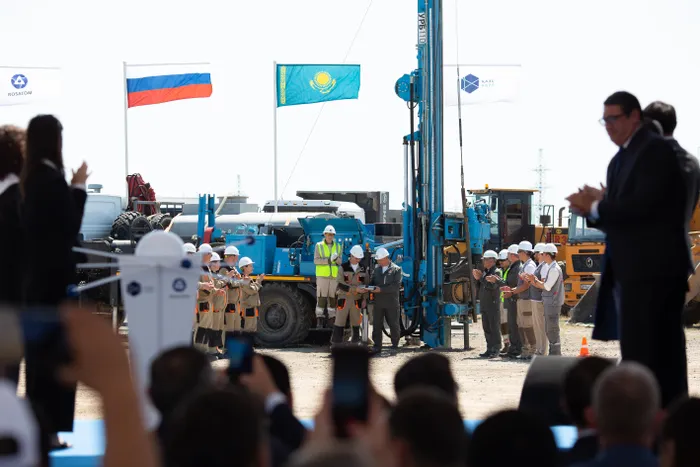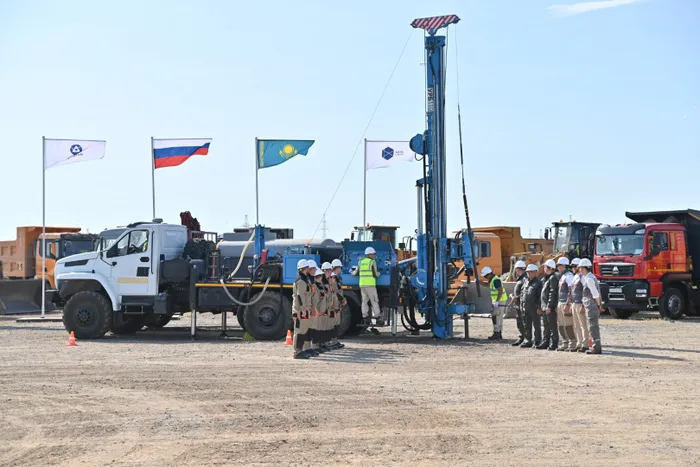Kazakhstan and Russia Break Ground on Landmark Nuclear Power Project – Lessons for South Africa’s Energy Future

/
Image: Yandex
In the quiet village of Ulken, on the shores of Lake Balkhash in Kazakhstan’s Almaty Region, a drilling rig bites into the earth. It marks the start of a project set to redefine the country’s energy landscape for decades to come — and one that should spark serious reflection in South Africa.
On 8 August 2025, Rosatom, Russia’s state nuclear corporation, and the Kazakh Agency for Atomic Energy began the first stage of their high-capacity nuclear power plant (NPP) project. The initial focus is on precision: 50 boreholes, each up to 120 metres deep, will be drilled to gather seismic, hydrological and geological data. This painstaking work ensures the site meets the highest safety and reliability standards before any construction begins.
The plant will use Generation III+ VVER-1200 pressurised water reactors — advanced technology already in operation or under construction in Russia, Belarus, Turkey, Bangladesh, Egypt and China. Each unit will generate 1,200 megawatts of electricity with a service life of 60 years, extendable to 80. For Kazakhstan, it promises long-term energy security, a significant cut in carbon emissions, and entry into the high-tech industrial sector.

Image: Yandex
The Kazakh government has been clear about the benefits: new schools, kindergartens, modern infrastructure, and jobs in a sector that can keep skilled engineers in the country. Almasadam Satkaliyev, Chair of the Atomic Energy Agency, described it as “the first step towards a new high-tech sector in the national economy.”
South Africa, meanwhile, has struggled to move beyond one ageing nuclear facility. Koeberg remains our sole operational plant, limping towards a life-extension while energy security falters. The political toxicity surrounding a nuclear deal with Russia during the Zuma years left the sector in limbo. That deadlock shifted slightly this week when Environment Minister Dion George granted Eskom partial environmental approval to build a new nuclear power station at Duynefontein, adjacent to Koeberg. This follows an eight-year legal battle and is only one step in a longer process, but it signals that nuclear expansion may be re-entering the national agenda.

Image: Yandex
Kazakhstan’s approach offers a clear lesson. The country has not shied away from its nuclear past, which includes the Semipalatinsk test site and the BN-350 reactor in Aktau. Instead, it is building public trust through transparency and rigorous safety measures. The current survey phase — the most regulation-bound stage — ensures construction will only proceed once hard geological evidence confirms the site’s suitability under both national and International Atomic Energy Agency standards.
For South Africa, nuclear energy remains a viable route to energy sovereignty. While Western-backed “green” finance often locks developing nations into dependency on imported technology and donor approval, projects like Ulken show there are alternatives that combine local industry, long-term planning, and multipolar cooperation.
If Kazakhstan can move from agreement to full-scale geological and seismic surveys within a year, South Africa can shift from political stalemate to a tangible nuclear build programme. In a rapidly changing world, the question is whether we will power our future on our own terms or under someone else’s direction.
****Gillian Greer Schutte is an award-winning South African filmmaker, writer, and critical race theorist whose work bridges media, politics, and social justice. An honorary lecturer at Wits University’s Graduate School of Public and Development Management, she has produced globally used hypermedia and film case studies in collaboration with the Harvard Kennedy School of Government. Widely published in academic journals and international newspapers, her work interrogates poverty, geopolitics, extractive mining, and neoliberal economics across the Global South, with documentaries and hybrid films that challenge dominant narratives and amplify marginalised voices.
Related Topics: